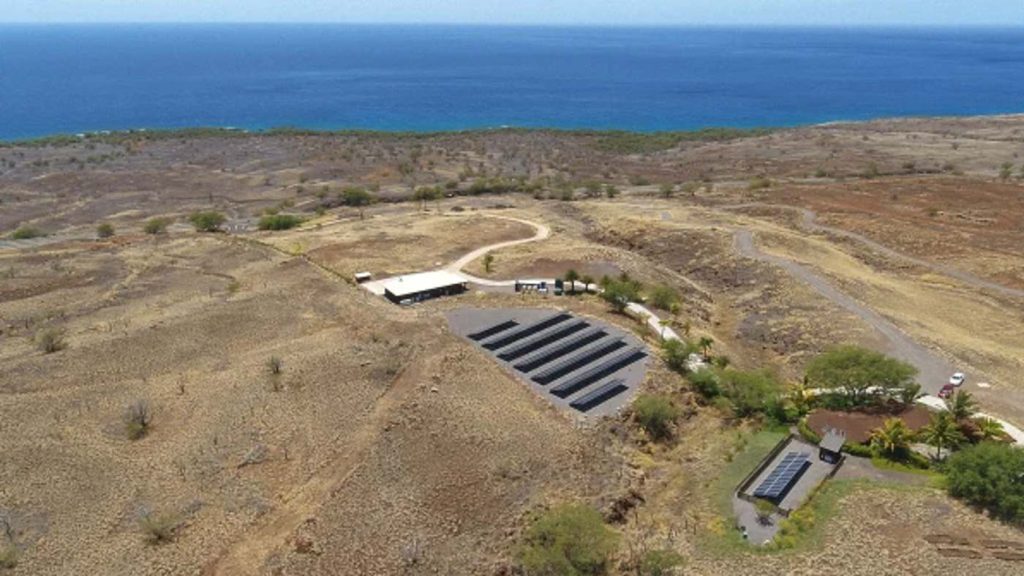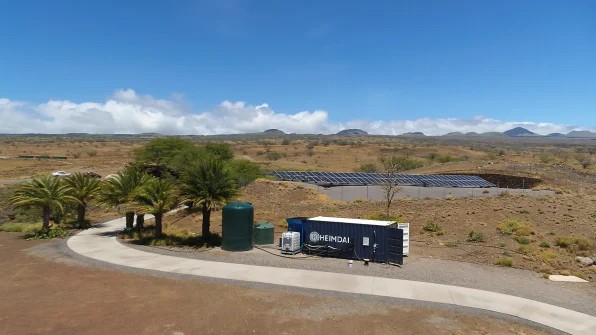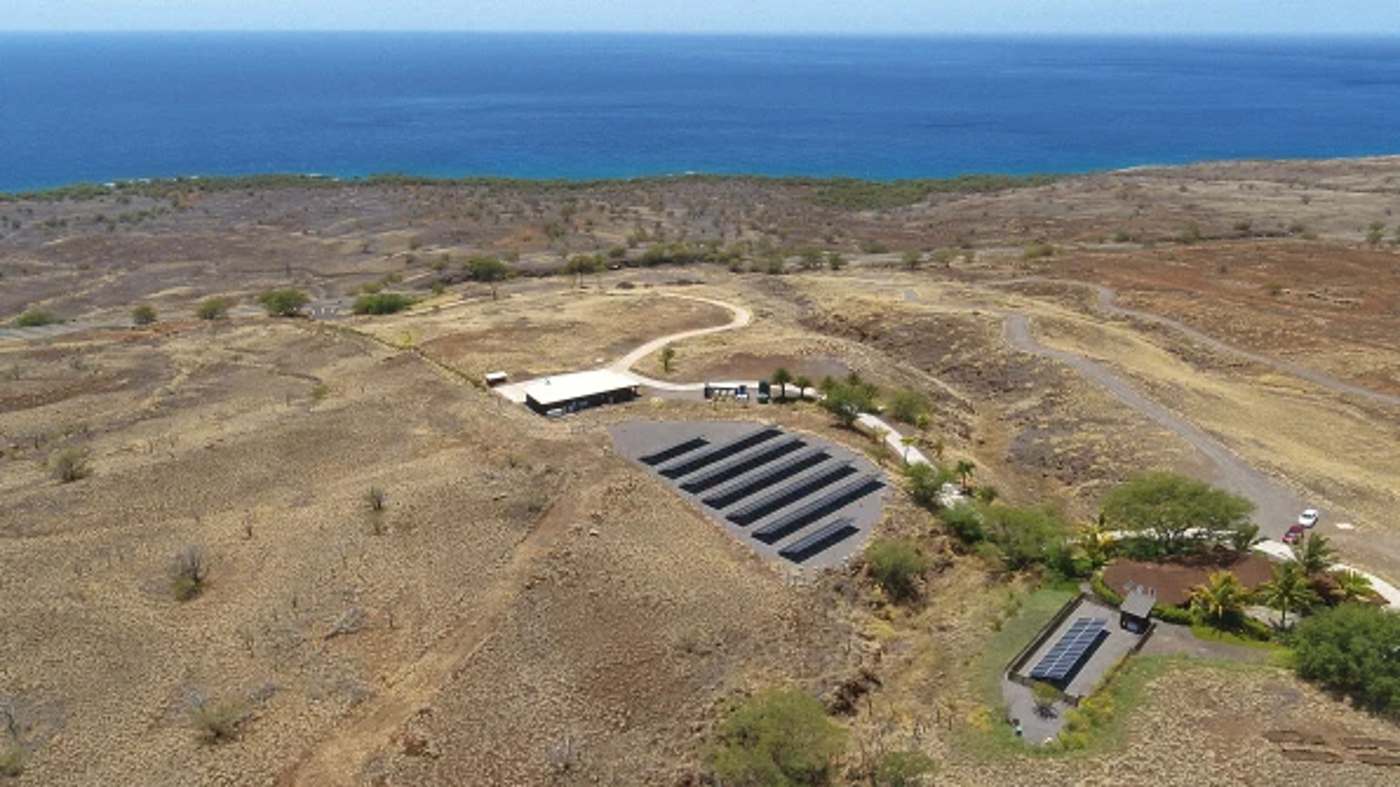
A company in middle of the Pacific has created a unique system that takes advantage of existing infrastructure to pull carbon from the ocean.
The advantage of taking carbon out of the ocean is simple—it holds more carbon in less space than in the air. Furthermore, plenty of machinery already pulls water out of the ocean—desalination plants for example—so it’s a simple matter of connecting the device held in a shipping container to existing systems.
In this case, the Hawai’i-based company Heimdal is taking advantage of the 50th state’s desalination plants on the Big Island.
Once seawater is pumped up into the Heimdal V1, it uses electrolysis to separate hydrogen and oxygen from the carbon-based acids that are warming the sea.
The purified seawater is returned to the ocean sans carbon, and the separated acids are sold as hydrochloric acid—a common manufacturing and laboratory compound that’s produced in factories to satisfy a 20-million-tons-per-year world market.
“When the excess acidity is removed from the ocean, it shifts how CO2 exists back to how it was pre-Industrial Revolution,” Erik Millar, co-CEO of Heimdal, told Fast Company.
“This moves it away from being carbonic acid, which causes ocean acidification, and toward bicarbonate and carbonate. These are stable forms of mineralized carbon dioxide that make their way down to the ocean floor, where they are stored for more than 100,000 years.”

Breaking the cycle
Key to understanding why carbon in the oceans affects global temperatures is their place in the global carbon cycle. Climate systems are constantly transferring carbon molecules in and out of the soil, around in the atmosphere, and down into the sea.
The oceans have now taken on a third of the all CO2 pumped into the atmosphere, making them warmer and more acidic. Carbon in the ocean will eventually return to the atmosphere, and so withdrawing it while it’s contained in a denser solution (water) means humans call pull more of it out, and at a faster rate.
MORE: City Trees and Soil Are Sucking More Carbon Out of the Atmosphere Than We Thought
To that end, each Heimdal, deployed in its shipping container, can pull 1,000 tons of carbon out of the ocean per year at just a fraction of the cost of air-capture methods. At its current prototype, Heimdal pulls carbon out of the sea at around $475 per ton, but future plants should manage 5,000 tons a year±and for less than $200 per ton.
If industry interests in buying carbon offsets continue as they have, Heimdal predicts they could be managing five million per year in just five years’ time.
SHARE the Good Green News From the Big Island With Friends…




















